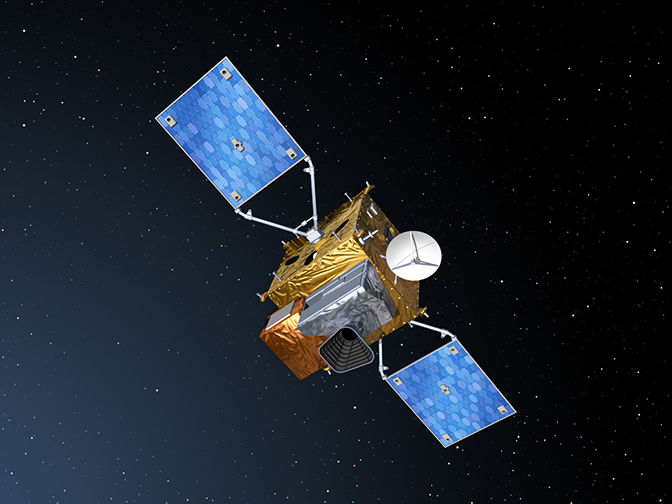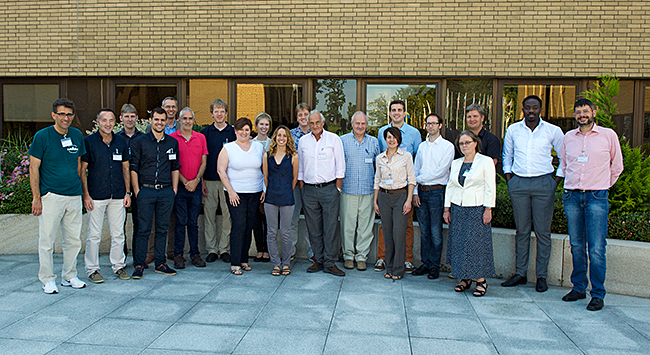

ECMWF is part of a consortium exploring new ways of exploiting high-resolution satellite data to monitor atmospheric ozone with unprecedented accuracy.
The EU-funded AURORA project (Advanced Ultraviolet Radiation and Ozone Retrieval for Applications) started in February 2016.
The partners, five research centres and four SMEs coordinated by the Italian CNR-IFAC, are using innovative methods to combine information about ozone from sensors on board Europe’s new Sentinel satellites.
The Sentinel satellites support the EU’s Copernicus Earth observation programme. The project specifically concerns the Sentinel-4, -5 and -5P missions, which are dedicated to collecting data for monitoring atmospheric composition.
Focussing on measurements sensitive to ozone, AURORA aims to demonstrate how user-driven applications can exploit the wealth of information provided by these instruments without the complication of handling huge data volumes.
Innovative techniques
AURORA is breaking new ground by using a combination of data fusion and data assimilation techniques. Data fusion involves combining atmospheric retrievals from different sources and at different spectral ranges (ultraviolet, visible, and thermal infrared) to produce a single, fused product of greater quality than the individual ones.
The fused ozone product is then used in a data assimilation system to generate ozone analyses and forecasts for about five days ahead. ECMWF’s Integrated Forecasting System (IFS) is one of two data assimilation systems being used for testing, together with the KNMI TM5 data assimilation system. The assimilation of fused products has never been tested before, and thus their potential impact has never been assessed.
“The application of data fusion methods is completely new, especially in combination with data assimilation,” explains Rossana Dragani from ECMWF. “This aspect has generated high expectations, in particular because the fused products are more informative than the standard retrievals while still representing the same physical variables of the original, unfused data, making the exploitation of the products transparent to users.”
The AURORA experiments set out to assess how well the data assimilation systems can exploit the additional information generated by data fusion.
As it will be some years before the Sentinel data becomes available, AURORA is working with simulated observations generated using atmospheric scenarios from the NASA MERRA-2 reanalysis. One of ECMWF’s tasks has been to prepare the atmospheric scenarios used to simulate the Sentinel-4 and -5 observations.
Potential applications
The ozone analyses and forecasts generated by the two data assimilation systems are used to calculate tropospheric ozone information and the UV-index at the Earth’s surface.
In the lower levels of the atmosphere, ozone acts as a pollutant and as a greenhouse gas. This detailed information about ozone concentrations and UV radiation has potential value for a range of applications, for instance in the fields of health care and climate policy.
AURORA plans to develop two demonstration applications, one for air quality prediction and monitoring in major cities and one for personal UV dosimetry. The aim is to determine whether using data fusion methods before assimilating the data adds value to the final products.
ECMWF’s role
Within AURORA, ECMWF is responsible for the assimilation of the fused ozone data in the IFS. ECMWF also leads the activities related to data assimilation and forecasts, the calculation of tropospheric ozone and the implementation of the prototype data processor for exchanging data among partners, to which many of the AURORA partners contribute.
“The project offers ECMWF the unique opportunity to trial the assimilation of fused data products and compare their impact to that produced by the assimilation of standard retrievals,” explains Dr Dragani.
AURORA’s technical infrastructure, including a Web-GIS platform and services for accessing and visualising data, is expected to significantly ease and widen the use of Copernicus Sentinel data to a wider community of scientists and application developers, as well as propose a possible model for operational data dissemination to users.

The AURORA consortium comprises five research organisations and four SMEs.
In July, representatives from all nine AURORA partners (IFAC-CNR, BIRA-IASB, ECMWF, FMI, KNMI, DATACRAFT, EPSILON, Flyby and S&T) met at ECMWF for the project’s first progress meeting. The meeting gave the consortium the opportunity to present the work done in the first six months of the project and discuss aspects relevant for forthcoming tasks.
At the end of the meeting, the External Expert Advisory Board appointed to monitor the project’s progress confirmed its view that “AURORA is in very good shape and on track”.
The next progress review meeting will take place in January 2017.
More information
Top image: Artist’s impression of Sentinel-4. The Sentinel-4 payload will be embarked upon a Meteosat Third Generation (MTG) satellite in geostationary orbit. (ESA - P.Carril)
